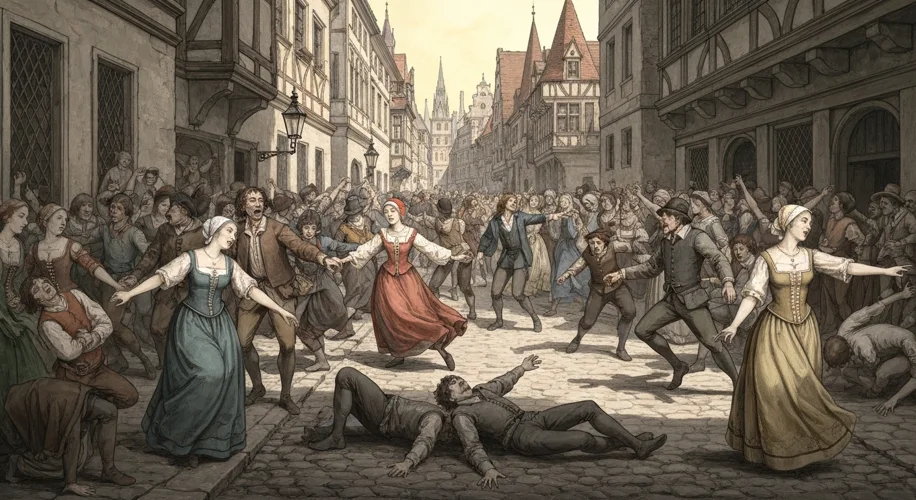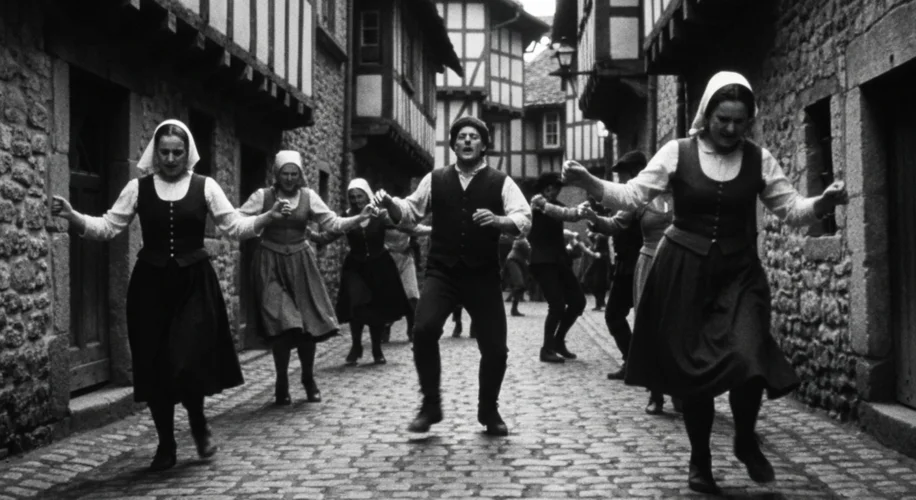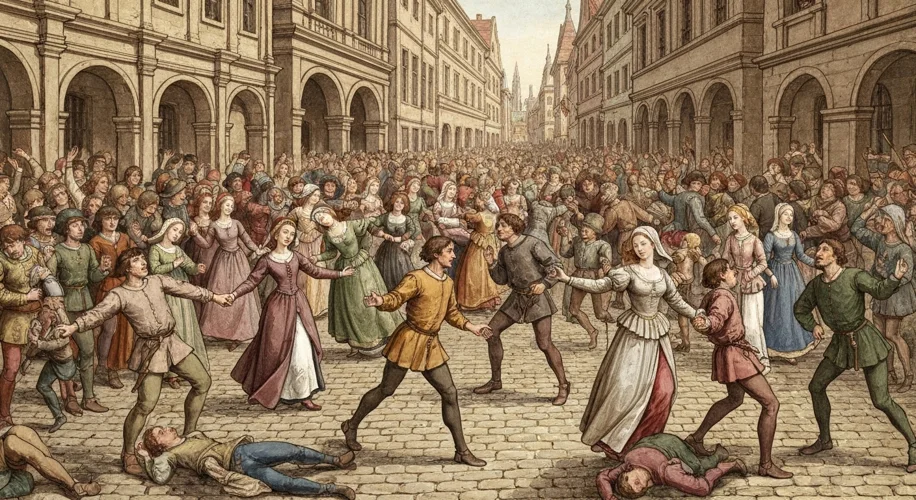Let us envision: Strasbourg, July 1518. The sun beats down on cobblestone streets, but the usual sounds of a bustling medieval city are replaced by a chilling, rhythmic thudding. A lone woman, later known as Frau Troffea, is in the throes of an uncontrollable dance. Her arms flail, her body twists, and her feet pound the ground with a desperate energy that belies the sweltering summer heat. She dances not for joy, but as if possessed, her face a mask of agony.
Little did the horrified onlookers know, this solitary, bizarre spectacle was the opening act of a phenomenon that would grip Strasbourg for weeks, becoming known as the Dancing Plague. In the heart of the Holy Roman Empire, a wave of inexplicable, compulsive dancing swept through the populace, leaving a trail of exhaustion, terror, and death.
A City Under a Spell
Strasbourg in the early 16th century was a city grappling with hardship. The populace, a mix of merchants, artisans, and laborers, had endured a series of harsh winters, famines, and the ravages of diseases like syphilis and the sweating sickness. The air often hung heavy with the scent of woodsmoke and desperation. Religious fervor was high, with many seeking solace and explanation in divine or diabolical intervention for their misfortunes.
The authorities, baffled by Frau Troffea’s relentless jig, initially believed that encouraging her to dance more would help her sweat out the affliction. They cleared a space in the marketplace, hoping the public display might cure her. Instead, it seemed to act as a bizarre invitation. Within days, dozens of others joined her, their movements mirroring hers – a synchronized, terrifying ballet of madness. By August, the number swelled to around 400 people, a river of tormented bodies flowing through the streets, day and night.

The Actors in a Tragic Play
The key actors were not kings or generals, but ordinary citizens caught in an extraordinary event. Frau Troffea, the enigmatic initiator, remains largely a figure of mystery. Who was she? What internal turmoil or external influence drove her to such an extreme? The city’s physicians, including the renowned Paracelsus (though his direct involvement is debated, his ideas about disease were influential), were consulted. They diagnosed the condition as ‘hot natural fever,’ attributing it to an imbalance of humors, and prescribed more dancing, along with bloodletting and baths. This, of course, only exacerbated the problem.
The city council, desperate to quell the epidemic, took a drastic step. Believing the dancing was fueled by ‘over-heating’ and ‘lust,’ they banned public dancing and erected a stage in a nearby weir, complete with musicians and dancers, in a twisted attempt to redirect the frenzied energy. This, too, proved futile. The afflicted continued their relentless, agonizing performances.
A Dance with Death
The plague wasn’t about frenzied revelry; it was a desperate struggle for survival. Witnesses described the dancers as being in a trance-like state, their faces contorted in pain and exhaustion. They danced until their bodies gave out. Some collapsed from sheer fatigue, their limbs refusing to obey their will. Others succumbed to heart attacks, strokes, or died from the cumulative toll of days without rest, food, or water.

The scene was one of profound psychological distress. The unrelenting movement, the inability to stop, the public spectacle of suffering – it painted a grim picture of a community pushed to its breaking point.
Echoes Through Time: Theories and Interpretations
The Dancing Plague of 1518 remains one of history’s most perplexing enigmas. Several theories have been proposed to explain this mass psychogenic illness:
- Mass Hysteria/Psychogenic Illness: This is the most widely accepted theory. In times of extreme stress, poverty, and superstition, the collective anxiety of the populace could have manifested as physical symptoms. The intense religious beliefs and fears of supernatural possession prevalent at the time might have provided a framework for such an outbreak. The stress of famine, disease, and potential witchcraft accusations could have triggered a psychological contagion.
- Ergot Poisoning: Ergot is a fungus that grows on rye and can cause hallucinations, muscle spasms, and convulsive fits. Ingesting contaminated bread could lead to symptoms akin to dancing mania. However, this theory is less favored as it doesn’t fully explain the sustained, coordinated dancing, nor why only certain individuals seemed affected at different times. If it were widespread ergotism, more widespread and varied symptoms would likely have appeared.
- Religious/Superstitious Beliefs: Some historians suggest that the dancing was a form of extreme religious devotion or a ritualistic attempt to ward off evil or appease divine anger. However, the apparent distress of the dancers contradicts this.

The plague eventually subsided as mysteriously as it began, perhaps due to the measures taken, the arrival of cooler weather, or the sheer exhaustion of the participants. Yet, the event left an indelible mark on Strasbourg, a chilling reminder of the fragility of the human mind and body when subjected to extreme pressures.
The Dancing Plague of 1518 serves as a powerful, albeit bizarre, testament to the interconnectedness of society, the profound impact of collective psychology, and the enduring mysteries that lie at the intersection of history, culture, and the human psyche. It reminds us that even in the most rational of ages, the echoes of past anxieties can manifest in the most unexpected and terrifying ways.

